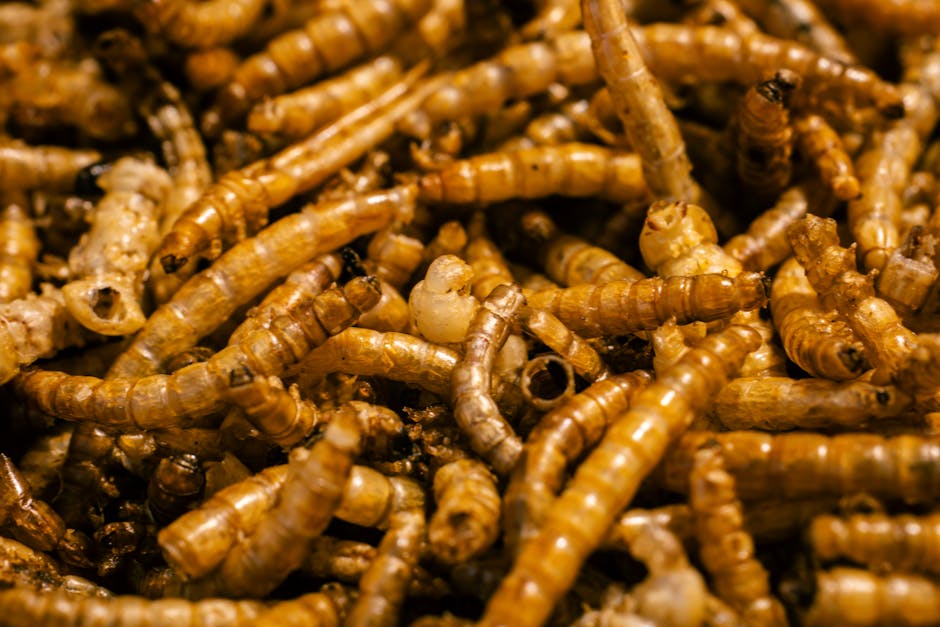Protecting Your Kale Plants from Insect Pests with Natural Solutions
When insects attack your kale plants, it’s disheartening to see the chewed holes and tiny bites on those carefully nurtured leaves. As a gardener, I’ve felt the frustration, but I’ve come to accept that pest challenges are part of the journey. The good news? There are natural, effective ways to fight back against the common pests that plague kale. In this guide, we’ll explore how to identify these invaders and control them using eco-friendly methods.
Step 1: Identifying the Pest on Your Kale
The first step to protecting your kale is identifying the culprit behind the damage. Even if you don’t spot the insect itself, the pattern of damage on the leaves can provide valuable clues. Let’s dive into the most common kale pests, their telltale signs, and how to manage them naturally.
1. Aphids (Aphididae Family)
Aphids are tiny, soft-bodied insects with sucking mouthparts that feast on kale by draining the plant’s juices. They often cluster in large numbers, giving the plant a fuzzy or spotted look. Their feeding can cause discolored leaves, and they excrete a sticky substance called honeydew, which can lead to fungal growth.
Control Methods for Aphids:
- Manual Removal: For small infestations, spray aphids off with a strong Hose blast or pick them off by hand. Discard infested leaves in your compost pile.
- Beneficial Insects: Introduce ladybugs, which are natural aphid predators. Opt for captive-raised ladybugs rather than wild-collected ones for better results. Another ally is the parasitic wasp Aphelinus abdominalis, which lays eggs inside aphids, turning them into “mummies” as the larvae develop. You can purchase these beneficial insects in the larval stage for release in your garden.
- Neem Oil: This natural insecticide works well on soft-bodied pests like aphids. Dilute according to the product instructions and spray on kale plants every seven days. Avoid spraying near harvest time unless necessary, and wash produce thoroughly as neem oil isn’t meant for direct ingestion. Note: Neem oil can be toxic to bees, so apply it during early morning or late evening when pollinators are less active.
- Insecticidal Soaps: These are another safe option for edible crops. Check the label for harvest timing and apply during cooler hours (morning or evening) to prevent leaf burn.
2. Flea Beetles (Chrysomelidae Family)
Flea beetles are small but destructive, leaving tiny pits and holes in kale leaves. They often appear in large groups, amplifying the damage quickly.
Control Methods for Flea Beetles:
- Diatomaceous Earth (DE): This powder, made from fossilized diatoms, is microscopically sharp and damages the respiratory systems of insects like flea beetles. Sprinkle food-grade DE on your plants for safe, effective control. It’s harmless to humans and pets.
- Pyrethrins: Derived from chrysanthemum flowers, pyrethrins are broad-spectrum insecticides that disrupt insects’ nervous systems. Spray on kale plants to quickly eliminate flea beetles.
- Spinosad: This natural insecticide, sourced from soil bacteria, kills pests on contact or when ingested. After application, flea beetles typically die within two days.
- Neem Oil: As with aphids, neem oil can also be used to manage flea beetles. Follow the same application guidelines for best results.
3. Harlequin Bug (Murgantia Histrionica)
Harlequin bugs are shield-shaped insects with striking black and red or yellow markings. They lay banded black-and-white eggs on leaf undersides and suck sap from kale, leaving white spots called stipples. Severe infestations can cause wilting and browning of plants.
Control Methods for Harlequin Bugs:
- Manual Removal: Pick off adults and egg clusters by hand and drop them into soapy water to kill them.
- Natural Sprays: Use neem oil, pyrethrin, or spinosad sprays to control larger populations.
- Insecticidal Soaps: While these don’t directly kill harlequin bugs, they soften their shells, making other treatments more effective.
4. Imported Cabbage Worm (Pieris Rapae)
These green caterpillars, the larvae of the small white cabbage butterfly, can devour kale leaves rapidly. Look for large bite marks, missing leaf edges, and round green frass (feces) as signs of their presence.
Control Methods for Cabbage Worms:
- Manual Removal: Pick off worms and egg masses by hand and dispose of them in soapy water.
- Bacillus Thuringiensis kurstaki (Btk): This naturally occurring bacterium is safe for edible plants. When sprayed on kale, cabbage worms ingest it and die. Check product labels for harvest timing, but many Btk products allow harvesting the day after application.
Tips for Keeping Your Kale Pest-Free
It’s almost inevitable that your kale plants will face pest pressures at some point. However, with the natural control methods outlined above, you’re well-equipped to manage these challenges. Here are a few additional strategies to minimize pest issues:
- Regular Monitoring: Inspect your kale plants frequently to catch infestations early.
- Companion Planting: Grow pest-repelling plants like marigolds or garlic near your kale to deter insects naturally.
- Row Covers: Use lightweight fabric covers to physically block pests from reaching your plants, especially during peak infestation seasons.
Share Your Pest Control Experiences
Dealing with pests on leafy greens like kale can be a learning curve. Have you encountered any of these insects in your garden? What natural methods have worked for you? Drop a comment below to share your tips or ask for advice on managing stubborn pests. Let’s grow healthier kale together!








